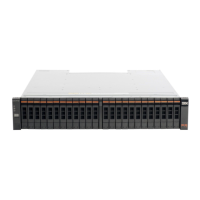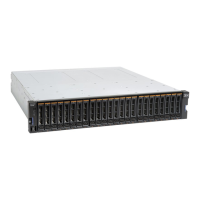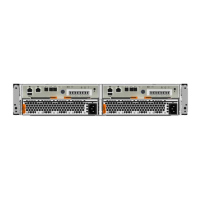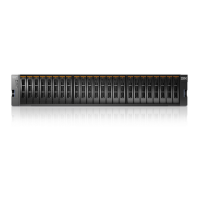Attention: Perform this procedure only if instructed to do so by a service action
or the IBM support center. If you have a single control enclosure, this procedure
requires that you shut down your system to replace the control enclosure. If you
have more than one control enclosure, you can keep part of the system running,
but you lose access to the volumes that are on the affected I/O group and any
volumes that are in other I/O groups that depend on the drives that are in the
affected I/O group. If the system is still performing I/O requests in all the I/O
groups, schedule the replacement during a maintenance period or other time when
the I/O can be stopped.
Be careful when you are replacing the hardware components that are located in the
back of the system that you do not inadvertently disturb or remove any cables that
you are not instructed to remove.
Ensure that you are aware of the procedures for handling static-sensitive devices
before you remove the enclosure.
About this task
To replace a control enclosure chassis, perform the following steps:
Procedure
1. If you are able to access either of the node canisters with the service assistant,
record the machine type and model of the enclosure, the serial number of the
enclosure, and the two WWNNs for the enclosure.
v From the service assistant home page, open the location data for the node.
Record the machine type and model (MTM), the serial number, WWNN 1
and WWNN 2 from the enclosure column.
v If you are replacing the enclosure because neither node canister can start,
retrieve this information after you have completed the replacement.
a. Start the service assistant on one of the canisters.
b. Go to the node location data on the home page.
c. Record the machine type and model, the serial number, WWNN 1 and
WWNN 2 from the node copy column.
The machine type and model and the serial number are also shown on
the labels at the front and back of the enclosure.
2. If the enclosure is still active, shut down the host I/O and the Metro Mirror
and Global Mirror activity to all the volumes that depend on the affected
enclosure.
This statement applies to all volumes in the I/O group that are managed by
this enclosure plus any volumes in other I/O groups that depend on the
drives in the affected I/O group.
3. If your system contains a single I/O group and if the clustered system is still
online, shut the system down by using the management GUI.
a. From the management GUI, go to Monitoring > Manage Device.
b. Select Shut Down System from the Actions menu.
c. Wait for the shutdown to complete.
4. If your system contains more than one I/O group and if this I/O group is still
online, shut down the I/O group by using the CLI.
a. Identify the two nodes in the I/O group.
b. To shut down each node, issue the following CLI command once for each
of the two node canisters:
110 Storwize V7000: Troubleshooting, Recovery, and Maintenance Guide
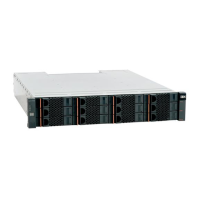
